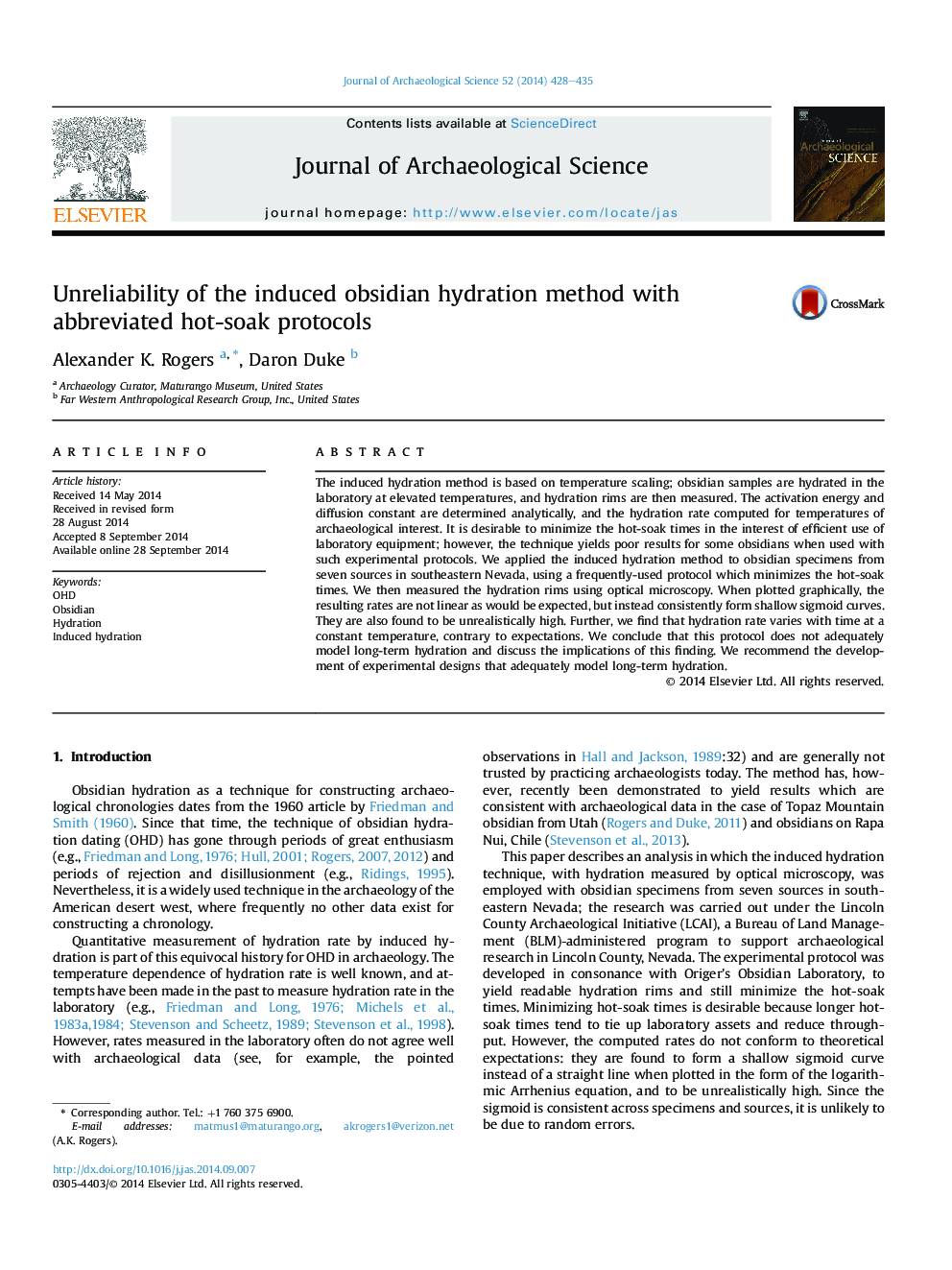| Article ID | Journal | Published Year | Pages | File Type |
|---|---|---|---|---|
| 7442781 | Journal of Archaeological Science | 2014 | 8 Pages |
Abstract
The induced hydration method is based on temperature scaling; obsidian samples are hydrated in the laboratory at elevated temperatures, and hydration rims are then measured. The activation energy and diffusion constant are determined analytically, and the hydration rate computed for temperatures of archaeological interest. It is desirable to minimize the hot-soak times in the interest of efficient use of laboratory equipment; however, the technique yields poor results for some obsidians when used with such experimental protocols. We applied the induced hydration method to obsidian specimens from seven sources in southeastern Nevada, using a frequently-used protocol which minimizes the hot-soak times. We then measured the hydration rims using optical microscopy. When plotted graphically, the resulting rates are not linear as would be expected, but instead consistently form shallow sigmoid curves. They are also found to be unrealistically high. Further, we find that hydration rate varies with time at a constant temperature, contrary to expectations. We conclude that this protocol does not adequately model long-term hydration and discuss the implications of this finding. We recommend the development of experimental designs that adequately model long-term hydration.
Related Topics
Physical Sciences and Engineering
Materials Science
Materials Science (General)
Authors
Alexander K. Rogers, Daron Duke,
